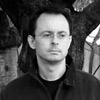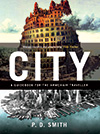19 April 2008 | forensic science, Reviewing |
In the 19th century, English juries and judges were notoriously sceptical about scientific evidence. According to the historian of forensic science Colin Evans, there was "a visceral distaste for the laboratory as a crime-fighting tool". But in the 20th century, a real-life Sherlock Holmes emerged whose "almost supernatural deductive gifts" won the confidence of lawyers and public alike. He was Home Office pathologist Sir Bernard Spilsbury.
I've just reviewed The Father of Forensics, Evans' new biography of Spilsbury. It's a compelling but gruesome read. My review is in today's Guardian. Be warned: it's not for the squeamish...
Read it here.
14 April 2008 | Maryanne Wolf, Reviewing, Science & literature, Steven Poole, Theroux |
Proust and the Squid by cognitive neuroscientist Maryanne Wolf is an inspiring celebration of the science of reading. In evolutionary terms, reading is a recently acquired cultural invention that uses existing brain structures for a radically new skill. Unlike vision or speech, there is no direct genetic programme passing reading on to future generations. It is an unnatural process that has to be learnt by each individual.
Wolf's fascinating book shows how evolutionary history and cognitive neuroscience are casting new light on "the complex beauty of the reading process". In particular, she highlights the brain's astonishing plasticity, its "protean capacity" to forge new links and reorganise itself to learn new skills: we are all born with the "capacity to change what is given to us by nature ... We are, it would seem from the start, genetically poised for breakthroughs".
You can read my review of Proust and the Squid for the Guardian here.
In the same issue I also review Paul Theroux's wonderful gonzo travelogue The Great Railway Bazaar, just re-issued by Penguin, and The Archimedes Codex: Revealing the Blueprint of Modern Science, by Reviel Netz and William Noel, the compelling account of how scholars and scientists have revealed the contents of the oldest surviving Greek manuscript of Archimedes. Read those here.
While you're over at the Guardian Review, Steven Poole's piece on Andrew Crumey's Sputnik Caledonia is also well worth reading. According to Poole:
"Science fiction makes you think of spaceships, magical technology, visionary futurism. Yet 'science fiction' might also be a good name for a kind of fiction that contains no robots or galactic battles but simply engages with science on a deeper and more authoritative level than your average novelist who borrows a vague understanding of quantum mechanics as a little moondust to sprinkle over the story."
One of the characters in the novel comments: "Go to any of our universities and you will find physicists who think they have no need of Shelley, or novelists who suppose they can live without Newton." As Poole says, "against this state of affairs, Sputnik Caledonia stands, in all its curious ambiguity, as a kind of manifesto." It's certainly going on my wish list.
31 March 2008 | Reviewing, Writing & Poetry |
I've just reviewed The Canon: The Beautiful Basics of Science, by Natalie Angier for The Independent. Her reason for writing The Canon is excellent: namely, that science is fun: “It’s fun the way rich ideas are fun, the way seeing beneath the skin of something is fun.” Angier's book is a very good survey of the big ideas of science, although I did have a few problems with her writing style, as you'll see from the review.
Angier writes with particular enthusiasm about the “outrageous magic” of astronomy. Although physicists, biologists and chemists might have an image problem in the public domain (think nukes, Frankenfoods, and pesticides), astronomers are the “responsible eco-tourists” of science. They probe the infinite depths of the cosmos from a distance with their telescopes and ask the really big questions: Where do we come from? How did it all begin?
“We are star stuff, a part of the cosmos,” one scientist tells her. “The specific atoms in every cell of your body, my body, my son’s body, the body of your pet cat, were cooked up inside massive stars. To me, that is one of the most amazing conclusions in the history of science, and I want everybody to know about it.”
At the weekend, the Guardian ran my review of Dan O'Neill's excellent The Firecracker Boys: H-Bombs, Inupiat Eskimos, and the Roots of the Environmental Movement, as well as The Transition Handbook: From Oil Dependency to Local Resilience, by Rob Hopkins. Read those here.
28 March 2008 | atomic bomb, C-bomb, Doomsday Men, Hiroshima, Kevles, Kubrick, Science & literature, Szilard, Wells |
Carol Van Strum has written an excellent piece about Leo Szilard's 1961 collection of stories The Voice of the Dolphins, as well as reviewing Doomsday Men for the campaigning organization the Department of the Planet Earth.
 Szilard - the brilliant scientist who saw how to realise HG Wells's dream of atomic energy in the 1930s - is the central figure in my study of superweapons. He was a wonderfully witty and engaging character. He fiercely opposed the dropping of atomic bombs on Hiroshima and Nagasaki and after the war became a tireless campaigner for nuclear arms control. After one of his articles on the subject was rejected by a newspaper editor, he told a friend: "If they cannot take it straight, they'll get it in fiction." The Voice of the Dolphins was the result.
Szilard - the brilliant scientist who saw how to realise HG Wells's dream of atomic energy in the 1930s - is the central figure in my study of superweapons. He was a wonderfully witty and engaging character. He fiercely opposed the dropping of atomic bombs on Hiroshima and Nagasaki and after the war became a tireless campaigner for nuclear arms control. After one of his articles on the subject was rejected by a newspaper editor, he told a friend: "If they cannot take it straight, they'll get it in fiction." The Voice of the Dolphins was the result.
It collects the stories he had been writing from the end of the war until 1961. As historian Daniel J Kevles has said, "it is a fiction of Swiftian nature, addressed to major issues, including those of geopolitics, the arms race, disarmament, population control, the morality of war, and the mismatch between modern man's enormous technical capabilities and his limited moral capacities." The collection is also wonderfully expressive of Szilard's own character and speaks powerfully of the influence of HG Wells on his life and work.
One reviewer noted its quality of "half farce and half nightmare". It was a quality that Stanley Kubrick soon realised was essential to depict an era living in the shadow of the Bomb. His classic film Dr Strangelove also depicts Szilard's most chilling brain-child: the cobalt doomsday bomb.
As Van Strum rightly says, "the satire, humor, and serious issues in these stories are as relevant today as they were forty-some years ago - a sorry reflection on our failure to heed the words of the wise."
She concludes with a wonderful quotation from Robert Lawson's The Fabulous Flight (1949), in which a boy called Peter and his seagull, Gus, steal a superweapon the size of an aspirin which is powerful enough to wipe out all of Europe:
"'Gus,' Peter said suddenly. 'I've been thinking about that capsule. We've got it and nobody else can get it and I don't think we ought to give it to anyone - even our own Government. It's just too terrible.'
"'Ben sort of thinkin' the same thing myself,' Gus replied. 'Of course I ain't eddicated, but seems to me that ain't a thing anybody ought to be let loose with."
You can read her excellent article here.
20 March 2008 | atomic bomb, CND, Dr Strangelove, Wells, Wittner |
CND's "Ban the Bomb" symbol is 50 years old tomorrow. It made its first appearance on a chilly Good Friday as thousands of British anti-nuclear campaigners set off from London's Trafalgar Square on a 50-mile march to the government's weapons factory at Aldermaston.
The demonstration had been organised by the Direct Action Committee Against Nuclear War (DAC) and the Campaign for Nuclear Disarmament (CND) joined in. Gerald Holtom, a designer and former World War II conscientious objector, persuaded DAC that they needed an image to express their aims. To create this he used letters from the semaphore - or flag-signalling - alphabet, super-imposing N (uclear) on D (isarmament) and placing them within a circle symbolising the Earth.
The full story is told in Ken Kolsbun's new book, Peace: The Biography of a Symbol. There's also a fascinating article about it on the BBC.
They interview peace historian Lawrence S. Wittner who says that "it is still the dominant peace sign," a fact partly due to its beautiful simplicity. It's perfect for spraying on walls and is a universally recognised symbol of peace and resistance to repression.
As Wittner says, although people are still fighting wars - this weekend is also the fifth anniversary of the invasion of Iraq - there has not yet been a nuclear war:
"There are many ways in which nuclear war has been prevented. The hawks say that the reason nuclear weapons have not been used is because of the deterrent. But I believe popular pressure has restrained powers from using them and helped curbed the arms race."
I agree that popular movements have played a big role in preventing nuclear war. But I would also argue that fiction and film brought the unique horrors of nuclear war alive in people's imaginations. The role of writers like HG Wells and Peter George (aka Peter Bryant), whose novel Red Alert was the basis for Stanley Kubrick's Dr Strangelove: or, How I Learned to Stop Worrying and Love the Bomb, is often forgotten. They too helped prevent war.
A peaceful Easter to you all!
 Szilard - the brilliant scientist who saw how to realise HG Wells's dream of atomic energy in the 1930s - is the central figure in my study of superweapons. He was a wonderfully witty and engaging character. He fiercely opposed the dropping of atomic bombs on Hiroshima and Nagasaki and after the war became a tireless campaigner for nuclear arms control. After one of his articles on the subject was rejected by a newspaper editor, he told a friend: "If they cannot take it straight, they'll get it in fiction." The Voice of the Dolphins was the result.
Szilard - the brilliant scientist who saw how to realise HG Wells's dream of atomic energy in the 1930s - is the central figure in my study of superweapons. He was a wonderfully witty and engaging character. He fiercely opposed the dropping of atomic bombs on Hiroshima and Nagasaki and after the war became a tireless campaigner for nuclear arms control. After one of his articles on the subject was rejected by a newspaper editor, he told a friend: "If they cannot take it straight, they'll get it in fiction." The Voice of the Dolphins was the result.
